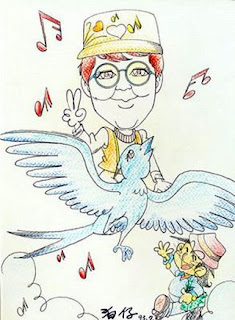I met Shulie at the National
Conference for New Politics, held in Chicago over the Labor Day weekend in 1967.
It was an unsuccessful attempt to unite the organized Left behind a presidential
ticket that would campaign against the war in Viet Nam. A couple women who were
not themselves part of the Left had persuaded the conference organizers to give
them some space for a women’s caucus. Black caucuses at such meetings were
common and accepted, but one for women was by itself radical.
Shulie was one of about four
dozen women who met daily to hammer out a resolution that called attention to
women’s issues – equal pay, childcare, abortion on demand and other things that
today don’t seem very radical. She didn’t say much, but what she did say stuck
in my mind. I would now characterize her views as radical feminism
uncontaminated by left-wing rhetoric – something that one didn’t often encounter
in those days.
When we took the women’s
caucus resolution to the Resolutions Committee we were told that we were too
late – the agenda already had a resolution on women and there was time for only
one. That resolution was written by Women for Peace, none of whom had attended
the women’s caucus; it was about peace, not women. I walked out mad. I probably
would have gone home had I not run into Shulie. At first, she didn’t believe
what I told her. But after she found out for herself, she was more angry than
I.
Individually, neither of us
would have done anything, but together we fed on each other’s rage. We decided
to propose a substitute resolution when the Women for Peace language was read
for discussion before voting the next day. We stayed up all night revising the
women’s caucus resolution; the more we talked, the more radical it got.
We printed copies and passed
them out. By the time the agenda reached women’s resolution, there were a
handful of us standing at the microphone, our hands stretched high, waiting to
be recognized to propose our substitute. After reading the "women’s" resolution,
meeting chair William Pepper recognized none of us. "All in favor, all opposed,
motion passed," he said. "Next resolution."
As we stood there in shock, a
young man pushed his way in front of us. He was instantly recognized by the
chair. Turning to face the crowded room he said, "Ladies and Gentlemen, I want
to speak for the forgotten American, the American Indian." Infuriated at being
"forgotten," we rushed the podium. The men laughed at our outrage. When Shulie
reached Pepper, he literally patted her on the head. "Cool down, little girl",
he said. "We have more important things to do here than talk about women's
problems."
Shulie didn’t cool down and
neither did I. We put together a list of every woman we knew who might be
interested in working on women’s issues and invited them to a meeting at my
Chicago apartment. What came to be called the West Side Group met for seven
months. Shulie only stayed a month before moving to New York; her sister Laya
took her place in our group.
Shulie took with her the names of some New York
women interested in women’s issues and with them founded the first women’s
liberation groups in New York.
For the next couple years we stayed loosely in touch. When the Dialectic
of Sex was published in 1970, she inscribed the copy she gave me "To Jo:
With Whom It All Began."
By 1975, Shulie had faded
away. I had to track her down to give her a copy of my first book when it was
published that year. Years later I was told by others of her mental illness and
its effects, but I didn’t see it myself.
We reconnected for a few years when her next book, Airless Spaces,
was published in 1998. She invited several of her old friends to celebrate. She
seemed fine, but others told me that she wasn’t.
The last time I saw Shulie was
in 2000, at the book party Gloria Steinem hosted for my latest book. Even though
they were both early feminists living in the same city, they had never met.
Gloria told her how honored she was to meet the author of such an important
early feminist book. They hugged, and they talked.
Shulie and I stayed in touch through 2003. Subsequently, I only got voice
mail when I called, and no reply to my e-mails. Carol Giardina and Kathy
Sarachild kept me apprised of her ups and downs through 2007. The next time I
heard about Shulie was when I got the notice of her death.
Thinking back on those years
and Shulie’s contribution to the women’s liberation movement, I see Shulie as a
shooting star. She flashed brightly across the midnight sky. And then she
disappeared.








沒有留言:
張貼留言